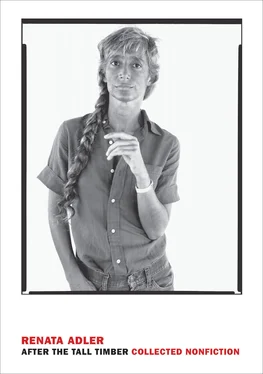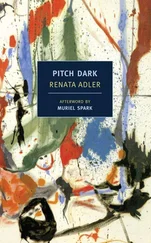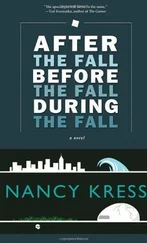Jackson’s speech, and Scalia’s opinion, contained a virtual blueprint of what the independent counsel’s office, under Kenneth Starr, would become and do. But Scalia’s main argument was that the Ethics in Government Act so seriously violated the constitutional separation of powers, which, for very good reasons, vests all the Executive power (including the power of prosecution) in the president, that it violated “the absolutely central guarantee of a just Government.” “The purpose of the separation and equilibration of powers,” Scalia said, “and of the unitary Executive in particular, was not merely to assure effective government but to preserve individual freedom.” When the Court upholds as constitutional a law that creates a prosecutor outside the Executive, “this is not the government of laws that the Constitution established; it is not a government of laws at all.” “That the Court could hold otherwise demonstrates the wisdom of our former constitutional system.”
The warning was apt and it was prescient, but Scalia thought that the greatest danger wrought by this diminution of the Executive would come from the legislative branch. “The statute,” he wrote, “is acrid with the smell of impeachment.” Also, “this is an open invitation for Congress to experiment. The possibilities are endless, and the Court does not understand what the separation of powers, what ‘ambition … countering ambition’ … is all about, if it does not expect Congress to try them.”
Congress, of course, did “try them,” and the independent counsel himself set off the debacle of an impeachment process. But what I had not realized, what nobody so far as I know has pointed out, was a provision of the act that the majority in Morrison virtually relegates to a footnote. “Most importantly,” Justice Rehnquist said, speaking for the Court, “the Act vests in the Special Division the power to choose who will serve as independent counsel and the power to define his or her jurisdiction.” It is only Footnote Three that tells us what the newly created “Special Division” is to be. It “consists of three circuit court judges or justices appointed by the Chief Justice of the United States.” The chief justice was, as he still is, Justice Rehnquist.
The wisdom of this arrangement is applauded in Footnote Thirteen: “Indeed, in light of judicial experience with prosecutors in criminal cases, it could be said that courts are especially well qualified to appoint prosecutors.” If that doesn’t give you a little chill, it may still shed light on the scene of the man in his Iolanthe-inspired robe presiding so affably in the Senate over a trial set in motion by a special prosecutor, whom he had selected and supervised.
Scalia’s dissent in Morrison demolished the majority opinion delivered by Chief Justice Rehnquist. “The prospect is frightening,” Scalia wrote, and there is nothing sarcastic, or insincere, in the tone of this opinion. “The fairness of a process must be adjudged on the basis of what it permits to happen.” The appointment of “the mini-Executive that is the independent counsel,” a prosecutor outside the Executive Branch, unelected and accountable to no one, destroyed “the equilibrium … the Founding Fathers envisioned when they established a Chief Executive accountable to the people.” Above all, it destroyed the tension among the three branches, which limits the power of each and provides the “absolutely central guarantee of a just government.” “That is what this suit is about. Power. The allocation of power … in such fashion as to preserve the equilibrium the Constitution sought to establish. Frequently an issue of this sort will come before the Court clad, so to speak, in sheep’s clothing: the potential of the asserted principle to effect important change in the equilibrium of power is not immediately evident…. But this wolf comes as a wolf.” The only thing that Scalia seemed less than prescient about was which branch was going to “experiment.” The danger came not from the legislative but from the judiciary, not from Congress but from the Supreme Court.
In case after case since Morrison , the Court, with majorities that now include Scalia, has expressed its disdain for the other branches, for elective officials of every kind (now including, of course, state judges), for voters, for colleagues on the Court who are not members of the Rehnquist Five. The diction of those five has been marked by an overwhelming sense of their own superiority, while the quality of their reasoning and of their decisions has radically declined. In 1997, there was Clinton v. Jones , decided by a unanimous Court. It seemed for a time that even the best of the justices were asleep, or had lost contact with life in the outside world. The decision refused to stay the trial of Paula Jones’s claims against President Clinton. The district judge had allowed discovery to go forward, but had concluded that an immediate trial, which “might hamper the President in conducting the duties of his office,” could be postponed until the end of his term.
The Supreme Court held otherwise. While it might “consume some of the President’s time and attention,” a trial “appears to us highly unlikely to occupy any substantial amount of [his] time,” or to impose an “unacceptable burden on [his] time and energy.” There was also no “perceptible” or “serious” risk that a “trial might generate unrelated civil actions” that could “conceivably hamper the President” in the conduct of his office. Meanwhile Jones’s “interest in bringing the case to trial” and the “timely vindication of her most fundamental rights” should not be subject to delay. “Delaying trial would increase the danger of prejudice resulting from the loss of evidence, including the inability of witnesses to recall specific facts, or the possible death of a party.” Such a delay, because of the “unforeseeable loss of evidence” and so forth, would subject Jones to a “risk of irreparable harm.”
So urgent was Jones’s complaint that she did not file it until two days before the three-year deadline under the statute of limitations. Her claim at the time consisted of four parts: violation of her civil rights under state law; conspiracy to violate her civil rights under federal law; intentional infliction of emotional distress; and defamation. The Court’s decision was certainly one of its least wise and prescient. What links it to Bush v. Gore (apart from considerable overlap among the authors of the briefs for Jones and Bush) is the question of a “stay” and “irreparable harm.” The trial of Jones must not be stayed, even temporarily, because the delay may cause Jones irreparable harm. (The Supreme Court here seems out of touch even with the experience of ordinary citizens before the courts: there is always delay, with its attendant risks of loss of evidence, and so on.) But the manual count in the Florida counties must , permanently, be stayed, because of the risk of irreparable harm to — well, to George W. Bush. The combination of Jones and Morrison was nearly the destruction of the Executive.
IV.
And there we are. One risk that seems to have passed, until now, under the radar of some of the justices is that the extreme right has become adept at using politically correct buzzwords (words from civil rights cases, from feminism, from affirmative action, from multiculturalism, and so forth) to advance diametrically opposite agendas. With Bush v. Gore , the majority of the Court — in spite of the persuasiveness and the eloquence of the dissents, and the efforts of the dissenting justices to preserve somehow the continuity of the institution — has virtually parodied the history and the meaning of such words (“equal protection” is but one example) to become quite openly the most dangerous branch. It has simply taken over, almost casually seizing rights that belong to the state courts, Congress, the electorate, and defying anyone to do something about it.
Читать дальше






![Джеффри Арчер - The Short, the Long and the Tall [С иллюстрациями]](/books/388600/dzheffri-archer-the-short-the-long-and-the-tall-s-thumb.webp)





